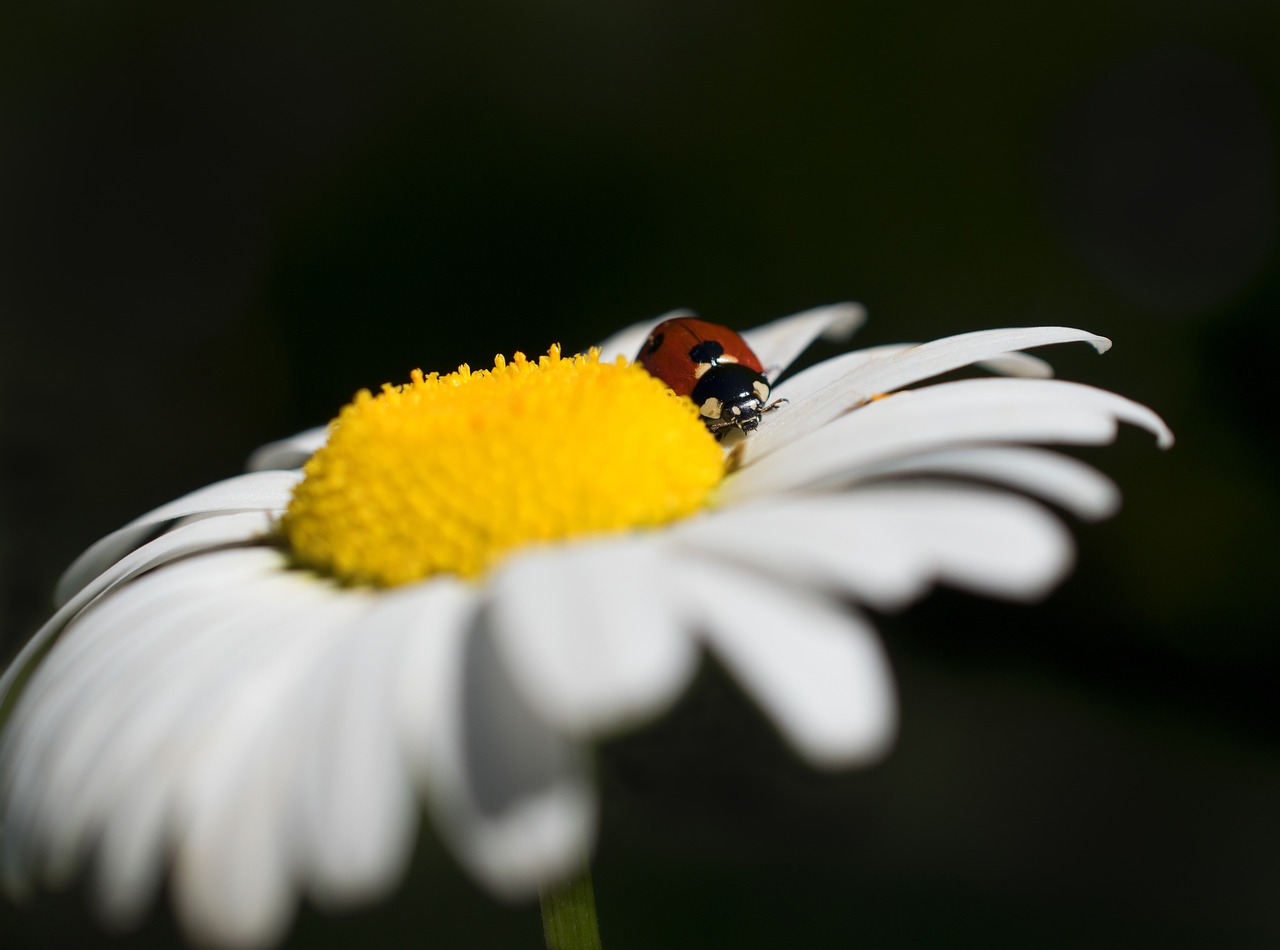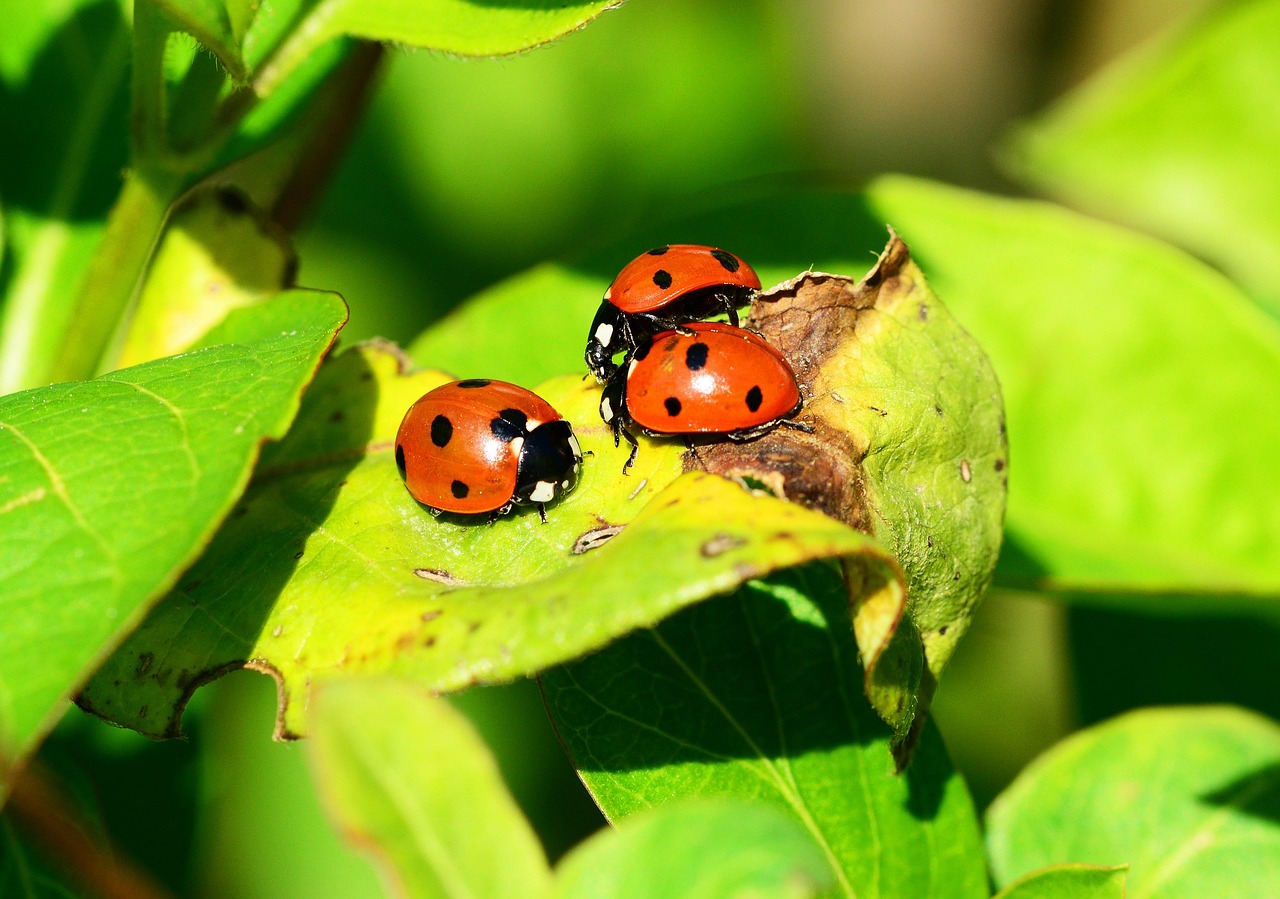When people think of ladybugs, they often envision the classic red beetle adorned with black spots. However, the world of ladybugs is much more diverse than this common image. Among the many species, one might be surprised to discover that brown ladybugs exist. These unique insects are not only fascinating but also play a vital role in our ecosystem. In this article, we will explore the characteristics of brown ladybugs, their habitat, and why they are significant.
Ladybugs belong to the family Coccinellidae, which encompasses over 5,000 species worldwide. While the iconic red and black ladybugs tend to steal the spotlight, brown ladybugs are often overlooked. Their distinct coloration can vary from pale tan to deep chocolate brown, providing them with excellent camouflage against predators. Understanding these insects requires diving into their biology and behavior.

Brown ladybugs, like their colorful counterparts, are beneficial for gardens and agricultural fields. They primarily feed on aphids and other pests that can damage crops. By controlling these pest populations, brown ladybugs contribute to healthier plants and can reduce the need for chemical pesticides. This natural pest control service highlights their importance in sustainable gardening practices.
Understanding Brown Ladybugs
Brown ladybugs are often misunderstood due to their less vibrant appearance. However, their role in nature is just as crucial as that of their more colorful relatives. Below are some key facts about brown ladybugs that help illustrate their unique characteristics.
| Characteristic | Description |
|---|---|
| Color | Ranges from light tan to dark brown |
| Size | Typically between 5 to 8 mm in length |
| Diet | Primarily aphids, but can also eat mites and other soft-bodied insects |
| Habitat | Commonly found in gardens, fields, and forests |
| Life Cycle | Egg, larva, pupa, adult |
These beetles undergo a complete metamorphosis during their life cycle. The stages consist of an egg, larva, pupa, and finally, the adult ladybug. Understanding this life cycle is essential for recognizing their role in pest management and biodiversity.
In addition to their biological characteristics, brown ladybugs exhibit interesting behavioral patterns. They tend to be more solitary compared to the social tendencies of some other insect species. While they may not congregate in large groups like the more familiar red ladybugs, they are still effective hunters when it comes to seeking out pests.
The presence of brown ladybugs in your garden can be an indicator of a healthy ecosystem. Their ability to thrive in various environments makes them adaptable and resilient. Observing these insects can provide insights into the health of your garden or agricultural field.
Moreover, brown ladybugs can sometimes be mistaken for other beetles due to their coloration. This makes it essential for gardeners and enthusiasts to familiarize themselves with distinguishing features to ensure they are identifying the right species. Knowledge about these insects not only enhances appreciation for biodiversity but also empowers individuals to foster environments where they can thrive.
In summary, brown ladybugs may not be as well-known as their more colorful relatives, but they hold significant ecological value. Their unique characteristics and behaviors make them an important part of our environment. As we delve deeper into this fascinating subject, we will uncover more about their habits and how we can encourage their presence in our gardens.
Habitat and Distribution of Brown Ladybugs
Understanding the habitat and distribution of brown ladybugs is essential to appreciate their role in the ecosystem. These resilient insects can be found in various environments, each offering suitable conditions for their development and survival.
Preferred Habitats
Brown ladybugs thrive in a variety of habitats, including:
- Gardens: They are commonly seen in home gardens where they can find plenty of aphids and other pests.
- Agricultural Fields: Farmers often benefit from their presence, as they help control pest populations.
- Forests: They inhabit wooded areas where they can find shelter and food sources.
- Urban Areas: Brown ladybugs adapt well to suburban environments, often found on plants and shrubs.
The adaptability of brown ladybugs allows them to thrive in diverse settings. This capability is crucial for maintaining natural pest control mechanisms across different ecosystems.
Global Distribution
Brown ladybugs can be found across various regions worldwide. Their distribution is influenced by climate, vegetation, and availability of food sources. Some key points about their global presence include:
- They are most commonly found in temperate regions but can also inhabit tropical areas.
- Different species of brown ladybugs may have specific ranges, from North America to Europe and Asia.
- Their populations fluctuate with seasonal changes, often becoming more visible during spring and summer months.
This wide distribution is an indicator of their adaptability and ecological importance. As such, they play significant roles in both wild and cultivated landscapes.
The Role of Brown Ladybugs in Pest Control

One of the most significant contributions of brown ladybugs is their role in controlling pest populations. Understanding how they achieve this can help gardeners and farmers appreciate their presence even more.
How They Help
Brown ladybugs primarily feed on aphids, but their diet can also include other soft-bodied pests such as:
- Mites
- Scale insects
- Thrips
This diet makes them effective biological control agents. As they consume these pests, they prevent infestations that could otherwise harm plants.
Feeding Habits
The feeding habits of brown ladybugs are fascinating. They employ several strategies to hunt for food:
- Sight: Brown ladybugs use their keen eyesight to locate prey on plants.
- Smell: They can detect the scent of aphids from a distance, guiding them toward food sources.
- Patience: They often wait quietly on leaves until an unsuspecting aphid comes within reach.
This combination of senses allows brown ladybugs to be effective hunters. Their ability to adapt their hunting strategies according to the environment further enhances their role in pest management.
Encouraging Brown Ladybugs in Your Garden

If you want to attract brown ladybugs to your garden, several strategies can help create a welcoming environment for these beneficial beetles. Here are some effective practices:
- Avoid Pesticides: Reducing or eliminating chemical pesticides will help protect ladybug populations.
- Plant Diverse Flora: Incorporating a variety of plants can provide food and shelter for ladybugs.
- Introduce Native Plants: Native plants often attract aphids, which can serve as a food source for ladybugs.
- Create Shelter: Leaving some plant debris or rocks can provide natural hiding spots for ladybugs.
By implementing these strategies, gardeners can create an environment that supports not only brown ladybugs but also a variety of beneficial insects, leading to a healthier garden ecosystem.

Identifying Brown Ladybugs
Correctly identifying brown ladybugs is essential for understanding their role and benefits in the ecosystem. Various species exhibit different characteristics, making it important for enthusiasts and gardeners to become familiar with their features.
Physical Characteristics
Brown ladybugs can vary significantly in appearance. Here are some common traits to help identify them:
- Color: Their color typically ranges from light tan to dark brown, sometimes with a reddish tint.
- Size: They usually measure between 5 to 8 mm in length, similar to other ladybug species.
- Shape: Brown ladybugs have a rounded, dome-like body shape, which is characteristic of the Coccinellidae family.
- Spotting: Unlike their red counterparts, brown ladybugs often lack the prominent black spots, making identification more challenging.
Being aware of these physical characteristics helps gardeners and nature enthusiasts recognize brown ladybugs when they encounter them.
Common Species of Brown Ladybugs
There are several species of brown ladybugs, each with unique traits. Some of the most common include:
- Harmonia axyridis: Also known as the multicolored Asian lady beetle, it can exhibit a range of colors, including brown. This species is known for its adaptability and can be found in various habitats.
- Adalia bipunctata: This two-spotted ladybug is primarily red but has variants with brown coloration. It is often recognized by its distinctive two black spots on its elytra.
- Coccinella septempunctata: The seven-spotted ladybug has some individuals that appear more brown than red. It is one of the most common species found in gardens.
Familiarizing oneself with these species aids in proper identification and helps gardeners understand which ladybugs are present in their environment.
The Life Cycle of Brown Ladybugs
The life cycle of brown ladybugs consists of four distinct stages: egg, larva, pupa, and adult. Understanding this cycle provides insight into their development and behavior.
Egg Stage
The female ladybug lays eggs on the underside of leaves, often near aphid colonies. The eggs are small and typically yellow or orange in color. This strategic placement ensures that the larvae have immediate access to food upon hatching.
Larval Stage
After a few days, the eggs hatch into larvae. This stage lasts about three weeks. The larvae are elongated and have a spiky appearance, which makes them look quite different from adult ladybugs. During this phase, they actively hunt for aphids and other pests, consuming large quantities to fuel their growth.
Pupal Stage
Once fully grown, the larvae attach themselves to a surface and enter the pupal stage. This stage lasts about a week. Inside the pupa, the larva undergoes metamorphosis to transform into an adult ladybug. During this time, they are immobile and vulnerable to predators.
Adult Stage
After completing metamorphosis, adult brown ladybugs emerge from the pupae. Initially, their exoskeletons are soft and pale, but within hours, they harden and develop their characteristic brown color. Adults typically live for several months and can reproduce multiple times during their lifespan.
The entire life cycle from egg to adult can take as little as four weeks under optimal conditions, allowing for multiple generations to thrive in a single growing season.
Threats to Brown Ladybug Populations
Despite their ecological importance, brown ladybugs face several threats that can impact their populations. Understanding these threats can help in efforts to protect them.
- Pesticide Use: Chemical pesticides pose a significant risk to ladybug populations by killing not only pests but also beneficial insects.
- Habitat Loss: Urbanization and agricultural expansion lead to habitat destruction, reducing available food sources and shelter for ladybugs.
- Climate Change: Changes in weather patterns can affect food availability and alter the habitats necessary for their survival.
Awareness of these threats is crucial for promoting conservation efforts aimed at protecting brown ladybug populations and ensuring their continued role in the ecosystem.
Conservation Efforts for Brown Ladybugs
To protect brown ladybug populations and ensure their ecological role is preserved, various conservation efforts can be implemented. These initiatives focus on creating favorable conditions for ladybugs to thrive while also raising awareness about their importance.
Creating Pollinator-Friendly Spaces
One of the most effective methods for supporting brown ladybugs is to design gardens and landscapes that cater to a variety of beneficial insects. Here are some strategies to create pollinator-friendly spaces:
- Plant Diverse Species: Incorporating a mix of flowering plants that bloom at different times provides continuous food sources throughout the growing season.
- Use Organic Gardening Practices: Emphasizing organic methods reduces harmful pesticide exposure, allowing ladybug populations to flourish.
- Establish Native Plant Gardens: Native plants are well-adapted to local ecosystems and often attract the pests that ladybugs feed on.
These practices not only benefit brown ladybugs but also enhance overall biodiversity in the garden.
Community Education and Awareness
Educating the community about the benefits of brown ladybugs is vital for their conservation. Local workshops, school programs, and informational campaigns can significantly raise awareness. Here are some ways to engage the public:
- Host Workshops: Organize events that teach participants about biodiversity, the role of ladybugs in pest control, and how to create ladybug-friendly habitats.
- Develop Educational Materials: Distributing pamphlets or creating online resources can help spread knowledge about brown ladybugs and their ecological significance.
- Encourage Citizen Science: Engaging community members in monitoring ladybug populations can foster a sense of stewardship and responsibility toward local ecosystems.
By involving the community, individuals can become advocates for brown ladybug conservation efforts.
Final Thoughts
Brown ladybugs, though often overshadowed by their more colorful relatives, are remarkable insects that play a crucial role in maintaining ecological balance. Their contributions to natural pest control make them invaluable allies for gardeners and farmers alike. Understanding their unique characteristics, life cycle, and habitat preferences can enhance our appreciation for these fascinating beetles.
As we face challenges such as pesticide use, habitat loss, and climate change, it becomes increasingly important to implement conservation strategies that protect brown ladybug populations. By creating supportive environments and raising awareness in our communities, we can ensure that these beneficial insects continue to thrive. The efforts we make today can have lasting impacts on biodiversity and the health of our ecosystems.
In conclusion, recognizing the existence and value of brown ladybugs is essential for fostering an environment where they can thrive. By taking actionable steps towards conservation, we contribute not only to their survival but also to the overall health of our gardens and natural areas. Let us celebrate the diversity of ladybugs and work together to protect these remarkable creatures for future generations.
